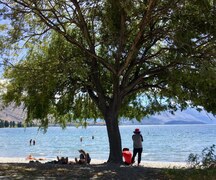Bird stocktake shows need for community effort

11 October 2024, 4:06 PM
 The Southern rock wren/pīwauwau, one of the 23 ‘regionally threatened’ natives.
The Southern rock wren/pīwauwau, one of the 23 ‘regionally threatened’ natives.Otago Regional Council (ORC) has released its first-ever stocktake of the bird population in the Otago region, shedding light on the current conservation status of its avian inhabitants.
The landmark study provides insights into the conservation needs of Otago birds and the pressing challenges they face, ORC senior terrestrial ecologist Dr Scott Jarvie said.
“In order to protect and restore our threatened species, we need to understand which species are living in our region and how they are doing,” he said.
The report assesses 283 bird species in the region, with 32 native species deemed ‘regionally threatened’ and four others are classified as ‘regionally at risk’.
Among the other birds included 43 species which have gone ‘regionally extinct’; 22 are ‘regionally not threatened’, and three were identified as ‘conservation translocations’ (which means they have been deliberately moved to Otago for conservation benefit and currently have populations).
Scott said the key threats to birds in Otago are habitat loss and degradation, introduced mammalian predators, human disturbance, and climate change.
“The data from this report will be instrumental in shaping future conservation efforts,” he said.
“We need everyone — residents, businesses, and local groups — to pitch in and help protect Otago’s unique birdlife.
“This isn’t just a council effort – it’s a community effort. Every action counts.”
Otago serves as a national stronghold for eight bird species, meaning more than 20 percent of the national population is within the region. They include migratory shorebirds and domestic migrants, emphasising the region's critical role in preserving these species.
ORC science and resilience general manager Tom Dyer said Otago wouldn’t be the same without the melody of birdsong.
“This report is an important reminder of the incredible avian diversity that graces our region.
This regional assessment is a crucial step in understanding and mitigating the impacts of environmental changes and other activities on bird populations.”
“The findings will guide ORC in achieving its biodiversity management objectives, ensuring our native bird species continue to thrive.”
Read the full report here.
PHOTO: Oscar Thomas






